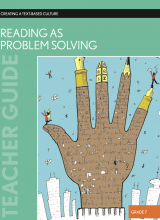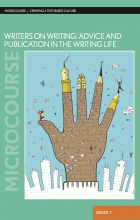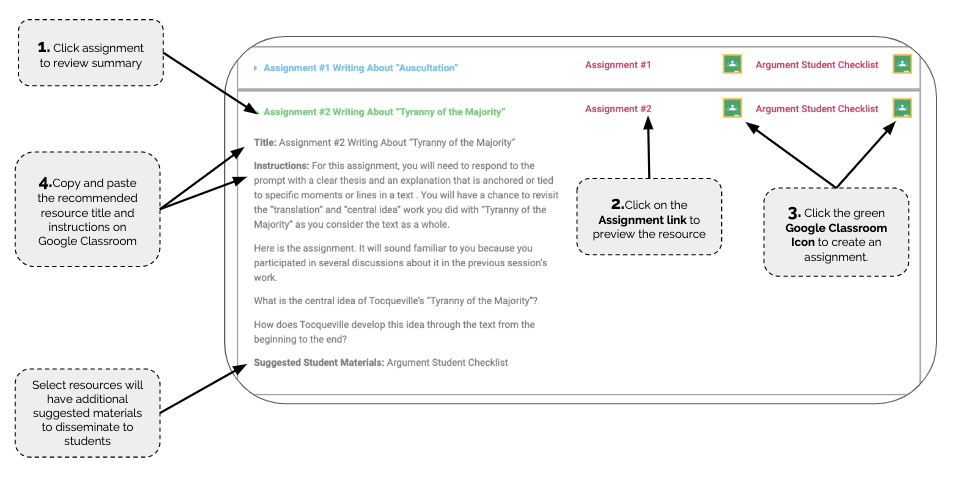Reading As
Problem Solving - Grade 7
The purpose of this unit is two-fold: First, it is a re-introduction to the reading life. During the unit, essential reading life elements such as independent reading and shared reading are reestablished and amplified. The second strand in the study is the introduction of the idea that reading is problem solving. This idea is useful insofar as it helps teachers and students enter into a dialogue about the things readers do before and during a reading to make sense of a text.


Table of Contents
Writing Tasks
Title: Book Interview
Teacher Manual Instructions:
Session 2
Have students gather in groups of three to five.
Distribute three randomly selected independent reading texts per student to each group. (If your classroom library isn’t yet large enough to facilitate this, consider conducting this session at the school or public library with the support of your librarian.)
Distribute copies of the “Book Interview” sheet to students.
Using the book you interviewed during the focus lesson, show students how to fill out the sheet. Answer any questions students have about the form and its terminology.
Give students time to fill out the “Book Interview” sheet.
Title: Book Pass
Teacher Manual Instructions:
Session 2
• Explain the purpose of a book pass:
» A book pass is another way to expose students to the texts available to them in the classroom library. A book pass requires students to use their book interviewing skills. A book pass is a chance for students to find titles to add to their “Books I’d Like to Read” list.
Distribute copies of the “Book Pass” sheet to students. (A copy-ready version can be found in the Appendix.)
Be sure you have one title for each student in the circle.
Give each student one book (or magazine). Tell students it doesn’t matter what they start with, because they will see all the books.
Choose a direction for passing.
After students receive a book, they should immediately record the author’s name (if the text is a book) and title on the “Book Pass” sheet.
Give students one minute to interview each book following the procedure established in the previous session.
At the end of one minute, call “pass.” At this time, students should make an entry in the comments column and pass the book to the next student.
Continue the book pass until each student has interviewed all the books.
Title: Goals for My Reading Life
Teacher Manual Instructions:
Session 12
Display the “Goals for My Reading Life” for the class to see.
Run through the questions, asking for volunteers to offer remarks about how they answered each item.
Reiterate the importance of taking the goal statements seriously. A person’s reading life is his or her own to create. Goals sheets can be powerful tools for making a reading life vital.
Charts for Discussion
Title: Books That Look Interesting to Period X
Teacher Manual Instructions:
Session 1
Tell the class you’d like for each student to share out one title that looked interesting and explain why. Capture these titles on a chart titled “Books That Look Interesting to Period X.” Post this chart near the classroom library for students to reference in the future.
Title: Beginning a New Book
Teacher Manual Instructions:
Session 3
Write on the board “Reading is problem solving.”
Ask the class to help you create a list of the kinds of problems that can arise during the reading of a text. This list might include the following:
Unfamiliar words, including words you can’t sound out.
Words you can say or sound out, but don’t know the meaning of.
Losing track of what’s going on.
Confusing sentence structures.
Unfamiliar settings in a story.
An unfamiliar genre.
Losing interest—the story gets boring.
Not understanding what’s happening.
Explain to the class that problems can be dealt with before, during, or after a given reading. Create a chart titled “Beginning a New Book.”
Tell the class that many problems a reader might face during the reading of a text can be prevented if the reader adds another dimension to the book interview process.
Title: What We Know About Book Recommendations
Teacher Manual Instructions:
Session 6
Ask students to turn to the next blank page in their notebooks and to title the page “Book Recommendations.”
Ask students if they have ever read a book recommendation before—perhaps in a bookstore where bookstore employees have posted short blurbs endorsing a text or maybe online on a site like amazon.com or teenink.com. Ask volunteers to say what they know about recommendations and the kinds of things readers write in them. Jot these items on a chart titled “What We Know About Book Recommendations.”
Next, display or distribute copies of some model book recommendations. This will ensure that students have a connection with the content and will help expedite their understanding of the form. You can find model book reviews at sites like goodreads.com, teenink.com, or amazon.com.
Read two or three sample reviews aloud to the class. Use the following questions to guide students’ study of these models:
What do readers do in book recommendations (or book reviews)?
How do they begin?
How do they end?
What do they do in the middle?
Jot these questions on the board. Use these questions to drive the class’s discussion about each of the examples. Capture the class’s answers to the questions on the “What We Know About Book Recommendations” chart.
Title: What To Do Before Reading a Book In-Progress
Teacher Manual Instructions:
Session 7
Explain to the class that students have already learned what to do before beginning a new book. This lesson has a different focus. Its job is to review with the class some of the things readers do to reorient themselves to a text in-progress—that is, a text that they are currently reading. Good readers always reorient themselves to the book they are reading before picking it up each time.
- Ask the class to help you list on the chart things readers do to get reoriented to a text in-progress. Your list should include, but not be limited to, things like:
- To follow a story, an argument, or a line of thinking.
Review the notes you wrote the last time you read.
Skim the last page or so of the previous day’s reading.
Review the who, what, where, when, and why of the text thus far.
See where you are in the text (at the beginning, near the end, etc.). Ask yourself: Given where I am in this text and what I know about this text and other texts of its kind, what do I expect to find out about (characters, problems, etc.) next?
To acquire information from a text for a specific purpose. (For example, my computer keeps crashing every time I try to use it. What should I do?)
Review the notes you wrote the last time you read. Skim the last page or so of the previous day’s reading. Review what you’ve learned so far.
Make a list of questions within your big question. (For example, when exactly is it crashing? What are the pros/cons of different solutions?)
Use the table of contents, headings, or index to locate relevant information. Jot down notes, page numbers, and questions.
When you have completed the chart with the class, model how a reader might use the contents of the chart to get reoriented to a text in-progress. To demonstrate this, use the class’s shared reading text.
Title: Using the Table of Contents and Index To Read More Effectively
Teacher Manual Instructions:
Session 8
Create a new chart titled “Using the Table of Contents and Index To Read More Effectively.”
Point out the following things:
» Sometimes a reader reads to acquire specific information (for example, to get an answer to a question or to find out how to do something).
» A reader can use a table of contents or an index to quickly locate important information.
Ask students to help you create a list of the kinds of texts (genres) that have a table of contents and an index. Be sure to include textbooks, biographies, informational texts about places and animals, how-to books, magazines, and travel guides.
Title: Handling Unfamiliar Words
Teacher Manual Instructions:
Session 9
Remind the class that the focus of this unit is “reading as problem solving.”
Point out that problem solving is at the heart of much of what we do and like to do as humans—whether we are playing video games, cooking a meal, playing sports, making music, dancing, etc. All of these endeavors are engaging in their own ways because they are challenging and satisfying and because they require their own kinds of expertise. It is the same with reading.
Briefly review with the class the charts created during the previous sessions.
Create a new chart with the heading “Handling Unfamiliar Words During Reading.”
Ask students to offer approaches they know for solving unfamiliar words that come up during a reading.
Title: Using Questions To Get Back On Track During Reading
Teacher Manual Instructions:
Session 10
Every reader has had the experience of reading and then suddenly thinking, “Hey, wait a minute. What’s going on here?” as she realizes, she has no idea what’s going on in the book. Tell the class that this focus lesson is designed to help readers get back on track after getting lost during their reading.
Create a chart titled “Using Questions To Get Back On Track During Reading.”
Divide the chart into two columns. Title the first column, “To follow a story, an argument, or a line of reasoning” and title the second column, “To acquire specific information.”
Present the following scenario to the class: “You are reading a novel. You started it two days ago and are on page 50. Before today’s reading you ‘reoriented’ yourself to the text and have been reading for the last 10 to 15 minutes. It’s a nice day. The birds are singing outside your window; there’s a breeze blowing through room; and you realize that you have no idea what is going on in your book.”
Ask the class: “What questions could this reader ask to help get back on track and to figure out what is happening?”
Title: Expectations for Independent Reading
Teacher Manual Instructions:
Session 12
Prior to class, create a chart titled “Expectations for Independent Reading.” This chart should include, but not necessarily be limited to, the following items:
Choose “just right,” interesting reading materials. Have an independent reading text in class each day.
Read independently during the independent reading portion of class.
Read deeply—identify favorite genres, authors, and topics and read lots of these texts.
Record your reading in a reading log.
Read widely—try new genres, authors, and topics during the course of the year.
Read the equivalent of at least 100-150 pages each week (20,000- 30,000 words).
Review the contents of this chart with the class. Point out to students that the 20,000-30,000 word goal for each week’s reading comes from research that suggests that a student who reads 200 words per minute, 25 minutes per day, 200 days per year will read 1,000,000 words per year. Research suggests that students who read 1,000,000 words per year not only do well on measures of reading achievement, but also experience adequate vocabulary growth and are more inclined to become lifelong readers.
Checks for Understanding
Title: Books I’d Like to Read
Teacher Manual Instructions:
Session 1
Ask students to turn to the next blank page in their notebooks.
Ask them to place the following heading at the top of that page: “Books I’d Like to Read.” Model this using your own notebook. Use the example above as a guide.
Remind students that this page is a “remembering” tool, a place for them to jot down titles of texts they want to read at some point.
Give students a minute or two to transfer information from their “Book Interview” sheets and the class chart to their “Books I’d Like to Read” page.
Collect the “Book Interview” sheets from each student. Review these to determine who requires additional instruction about the book interview process.
Establish procedures for cleaning and exiting the room.
Title: Problems and Solutions
Teacher Manual Instructions:
Session 6-A
Ask students to share the problems they encountered while reading. Add these problems to the “Problems and Solutions” T-chart.
Work with the class to brainstorm solutions to the problems students encountered. Review past challenges classmates have suggested and consider new ones.
Independent Reading
Title: Book Interview
Instructions:
Display a copy of the “Book Interview” for the class to see and distribute paper copies to students. (See example nearby or the Appendix for a copy-ready version.)
Using the book you just interviewed, show students how to fill out the sheet.
Pass out three books to each student.
Give students time to make an entry on their “Book Interview” sheet for each of the three titles.
Title: Books I’d Like to Read
Teacher Manual Instructions:
Ask students to turn to the next blank page in their notebooks.
Ask them to place the following heading at the top of that page: “Books I’d Like to Read.” Model this using your own notebook. Use the example above as a guide.
Remind students that this page is a “remembering” tool, a place for them to jot down titles of texts they want to read at some point.
Give students a minute or two to transfer information from their “Book Interview” sheets and the class chart to their “Books I’d Like to Read” page.
Collect the “Book Interview” sheets from each student. Review these to determine who requires additional instruction about the book interview process.
Establish procedures for cleaning and exiting the room.
Title: Book Pass
Teacher Manual Instructions:
• Explain the purpose of a book pass:
» A book pass is another way to expose students to the texts available to them in the classroom library. A book pass requires students to use their book interviewing skills. A book pass is a chance for students to find titles to add to their “Books I’d Like to Read” list.
Distribute copies of the “Book Pass” sheet to students. (A copy-ready version can be found in the Appendix.)
Be sure you have one title for each student in the circle.
Give each student one book (or magazine). Tell students it doesn’t matter what they start with, because they will see all the books.
Choose a direction for passing.
After students receive a book, they should immediately record the author’s name (if the text is a book) and title on the “Book Pass” sheet.
Give students one minute to interview each book following the procedure established in the previous session.
At the end of one minute, call “pass.” At this time, students should make an entry in the comments column and pass the book to the next student.
Continue the book pass until each student has interviewed all the books.
Title: Goals for My Reading Life
Teacher Manual Instructions:
Ask students to turn to the “Books I’d Like to Read” page in their notebooks.
Display a copy of “Goals for My Reading Life” for the class to see and distribute copies to students. Using the display copy, show students how to fill out the goals sheet. Show them how they can use the information charts created in earlier sessions to generate ideas for answers to the “Goals” questions.
Explain that at the beginning of each six weeks, each student will fill out
a new goals sheet. At the end of each six weeks, students will take a few minutes to review their goals statements and reflect on their efforts to meet them.Answer any questions students have about the “Goals for My Reading Life.”
Give students time to complete the sheet. (They should only fill out the goal-setting portion of the assessment at this point.) Tell them that these will be collected at the end of the closing meeting and that you will return these at the next session. (You may decide to photocopy a set for yourself.)
Return the sheets to students during the next session and have them attach the sheet to a page in their notebook.
Title: Reading Log
Teacher Manual Instructions:
Write “Reading Log” on the board.
Explain to the class that a reading log is simply a place where a reader keeps track of all the reading he or she has done over a period of time.
Ask students to turn to the next blank page in their notebooks and to reserve at least three pages for the reading log.
On a piece of chart paper or another display, show students how to set up a “Reading Log” in their writer’s notebook. (See example on next page.) They should be sure to enter it in their table of contents as well. You may decide to distribute sticky notes so that students can flag this page.
Explain to students that they should make an entry in their log only after they have finished a book. You will need to negotiate with students how to handle the entry of magazine readings (for example, entire issues versus individual articles).
After students have set up the log, including proper headings, creating the grid, etc., show students how to make an entry.
Answer any questions students have about the reading log.
Tell students that they can make their first entry in their reading log at the beginning of independent reading.
